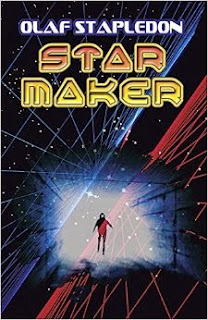 |
| An image from the Spitzer Space Telescope. A cloud rich with polycyclic aromatic hydrocarbons is illuminated by starlight (the cloud is false-colored green). |
However, the Blogger URL using "astrobiologist" was already taken. Bummer, right. That's when I had the idea of using the word "cosmobiologist" instead. There have been astronauts and cosmonauts, so why not use cosmobiologist in place of astrobiologist? The prefix "astro-" usually implies that something has to do with the stars (from Greek "aster"), while the prefix "cosmo-" implies that something is related to the cosmos (indeed, hailing from the Greek word "cosmos"). So, for me, "cosmobiologist" sounded right.
Indeed, it even felt like maybe "cosmobiologist" meant something more than just a word that is synonymous with "astrobiologist". I decided to think a little more about it and that's when I realized that the words "cosmobiology" and even "cosmobiota" needed to become regular usage for me (and anyone else who is interested). Nothing wrong with coining new words, right? Well, in the case of cosmobiota, I haven't heard anyone else use it before so I think that one is a neologism on my part. As for cosmobiology, well, it turns out someone had already tried using that for something else. Indeed, cosmobiology as a word has been used for a certain form of astrology that's been around since the 1920s. However, I don't see anything wrong with me using the word in a different way. It will only matter if people don't understand what I'm talking about, and I haven't had that problem yet. So, let me tell you in this post what the words cosmobiology and cosmobiota mean to me and why I now call myself a cosmobiologist.
 |
| (art by Miguel-Santos at Deviant Art) |
Even though the word cosmobiology has been used previously for a form of astrology, I personally use the word in a much different sense. Much as astrobiology is the scientific study of the origins, evolution, and radiation of life in the universe, cosmobiology is the philosophical side of that study of such origins, evolution, and radiation of life with a focus on the role that life plays in the cosmos. Astrobiology has become a diverse realm of study, encompassing large parts of chemistry and biology, physics and geology, oceanography and climate science, astronomy and computer science. However, when I think of the philosophical and perhaps even sociological side of astrobiology, that's when the word cosmobiology pops into my mind. That might sound trivial, but I think it feels right, and that's why I'm sticking with it.
Cosmobiota
It wasn't long after choosing the word "cosmobiologist" for myself and my blog that I thought of the word "cosmobiota". Much as the word biota is defined as the living material or organisms of a specific region or time, cosmobiota is the living material of the universe. Cosmobiota, to me, implies the life of either a certain point in space and/or time or could even imply all life in the cosmos. It's not a word that can be used often, but it has allowed me to generalize some thoughts about life in a more universal sense.
Although these words, cosmobiology and cosmobiota, are not likely to become part of modern parlance, I find them attractive and intriguing and will continue to use them in my own manner. If others wish to use them as well in the same sense, I would be quite tickled and honored by that.


















